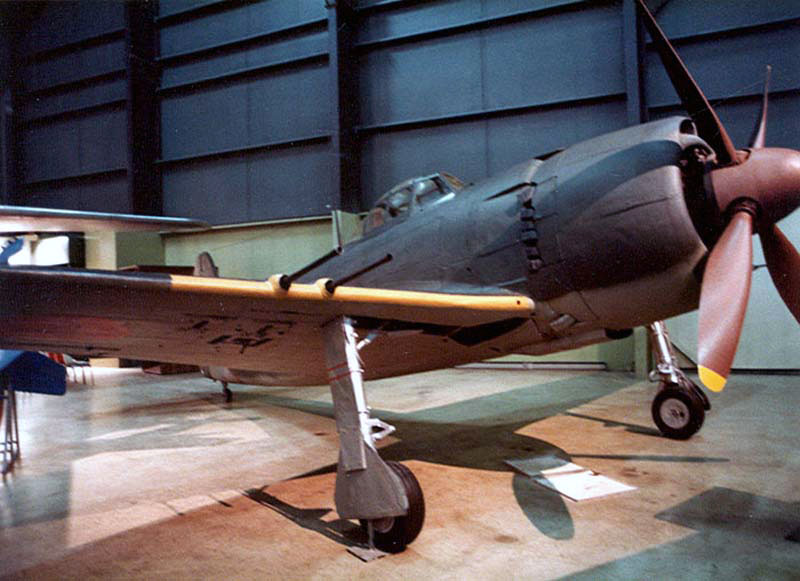| Kawanishi |
|
N1K2-Ja Shiden KAI |
 |
|
Photo:
Robert Deering 10/18/2012 National Museum of the USAF Wright-Patterson AFB (FFO) Dayton, Ohio |
|
The N1K2-Ja
Shiden Kai (Japanese for "Violet
Lightning--Improved") was the best fighter used in
significant numbers by the Japanese Navy during World War
II. Known by the Allies as the "George," this maneuverable,
heavily-armed fighter was a formidable opponent in the
closing months of the war.
The Shiden Kai was considerably better than the Japanese Navy's most common fighter, the A6M Zero. With a top speed of 369 mph, the N1K2 was about 20 mph faster than the A6M Zero. The heavier Shiden Kai also possessed surprisingly good maneuverability due to a mercury switch that automatically extended the flaps during turns. These "combat" flaps created more lift, thereby allowing tighter turns. Moreover, its four 20 mm automatic cannon provided greatly increased firepower than earlier Japanese designs. Unlike the A6M Zero, the Shiden Kai could compete against the best late-war U.S. Navy and U.S. Army Air Forces fighters. The N1K2-Ja was developed to counter high-flying B-29s. It first entered combat early in 1945, and over 400 were produced before the war ended. The Shiden Kai primarily equipped the 343rd Kokutai, a unit composed of the Japanese Navy's best fighter pilots. Commanded by Capt. Minoru Genda, the mastermind of the Pearl Harbor attack, the 343rd Kokutai entered combat in March 1945 in the defense of the Japanese home islands. Shiden Kai pilots scored several successes against low-flying, carrier-based U.S. Navy fighters. Even so, they did little to stop high-altitude B-29 attacks because of the N1K2's insufficient climbing ability and the considerable loss of horsepower and engine reliability above 21,000 feet. These B-29 raids seriously hindered Shiden Kai production by heavily bombing the plants building the fighter. The (U.S. Air Force) museum's N1K2-Ja is a fighter-bomber variant of the Shiden Kai equipped with wing mounts to carry bombs. It is painted as an aircraft in the Yokosuka Kokutai, an evaluation and test unit similar in function to the USAAF's flight test unit at Wright Field. As a result of Japanese forces being pushed back on the battlefront, by the spring of 1945 Yokosuka Kokutai test pilots entered combat in a desperate defense against overwhelming Allied air attacks. This aircraft is one of only three surviving restored examples in the world. TECHNICAL NOTES (N1K2-Ja): Armament: Four Type 99-2 20mm cannon and four 551-lb. bombs Engine: 1,990 hp Nakajima NK9H Homare Maximum speed: 369 mph Source: National Museum of the United States Air Force |
 Photo: Robert Deering 10/23/2006 Smithsonian National Air and Space Museum Dulles International Airport (IAD) Chantilly, Virginia |